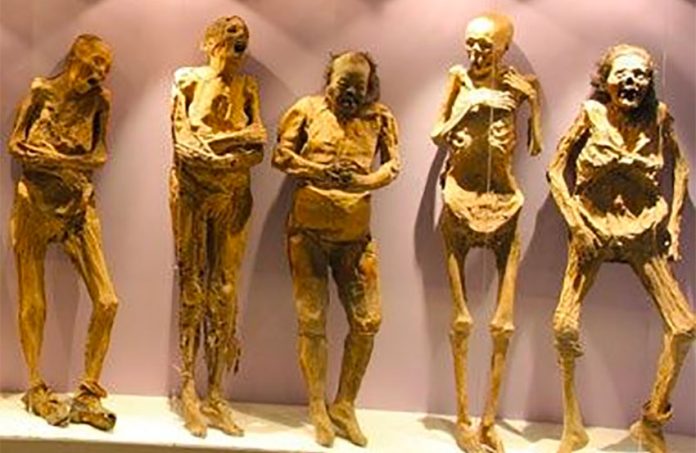A former director of Guanajuato’s world-famous mummy museum has accused the municipal government of mishandling the collection, leading to the likely disappearance of 22 mummies, among other problems.
Cultural event promoter Paloma Reyes Lacayo filed her initial complaint with the National Institute of Anthropology and History (INAH) in November 2019, and as cultural attractions like the museum prepare to resume services in the coming weeks according to the federal government’s three-phase reopening plan, the mummies are nowhere to be found.
But as intriguing as a heist of almost two dozen mummies may be, the more likely explanation, according to Reyes, is much less exciting.
“In my opinion it’s highly probable that … the bodies have suffered skeletonization,” she said, meaning the carefully preserved skin, hair and clothing of the missing mummies has most likely disintegrated, leaving nothing but the bones.
Reyes attributed the process to “the inadequate conditions in which they’ve been handled and transported” and called out the government of Mayor Alejandro Navarro Saldaña for the mistreatment and unauthorized movement of the collection.
She said the city’s cultural heritage is put at risk by Navarro’s government, which has taken specimens to festivals and fairs in Zacatecas, San Luis Potosí and León — and even a race car rally in the city’s underground road system — without proper authorization or adherence to conservation protocols.
Having served as head of the museum from 2015 to 2018, Reyes said she is well aware that the museum’s protocols do not allow for the pieces to be transported outside of the municipality.
Although the Museum of the Mummies of Guanajuato normally boasts a collection of 117 pieces of mummified remains, including 111 complete female and male bodies, four heads and two fetuses, Reyes said the current inventory can only account for 95 pieces.
She requested the intervention of INAH, UNESCO and the Guanajuato state auditor’s office to safeguard the remaining pieces before the world’s largest collection of mummies incurs further losses.
“The mummies are the face Guanajuato shows the world, and this situation is critical,” said Reyes. “I’m worried they’ll continue to be desecrated … [by] this excessive obsession to display them all over the place.”
INAH has not commented on the situation and did not respond to requests from the newspaper Excélsior for interviews. Its only response to Reyes’ complaint was a January 9 internal memo announcing that an investigation into her original report from November was underway.
Reyes later alerted the institute of the possible loss of the 22 mummies in a subsequent report made on January 21.
Source: Excélsior (sp)
